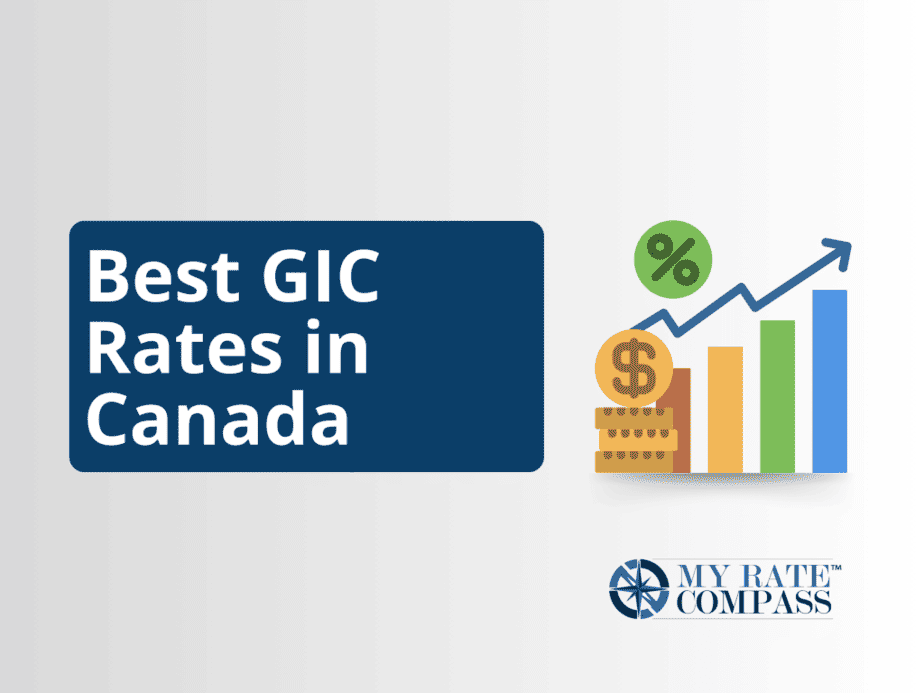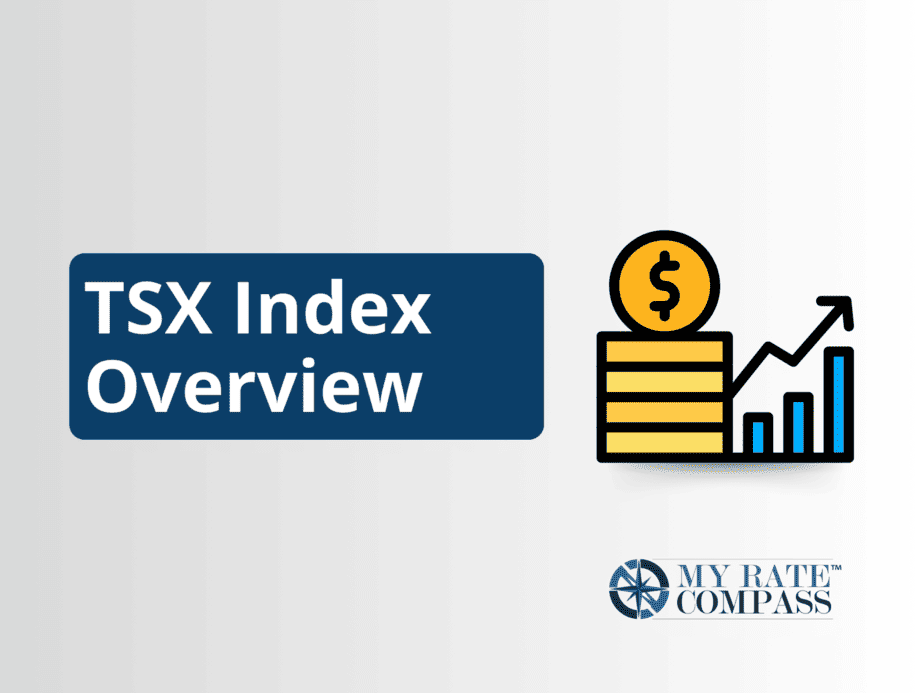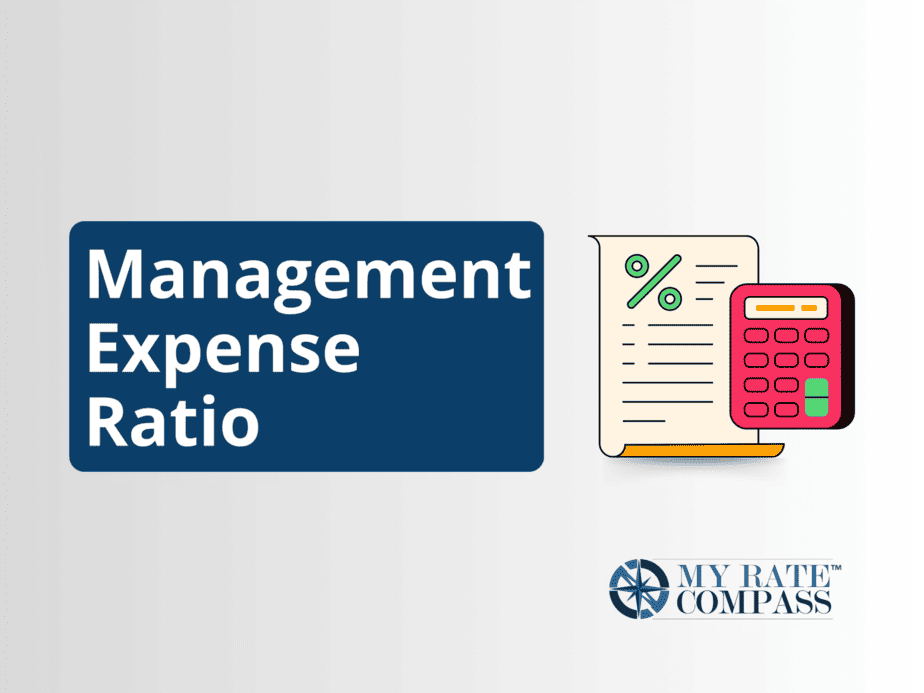Guaranteed Investment Certificates (GICs), sometimes called term deposits, are considered a safe investment opportunity guaranteeing stable returns. If you’re looking for a new investment opportunity in Canada, a GIC might be the right choice for you. However, there are multiple GIC products to choose from in Canada, and picking the right one can be a challenge.
Luckily, this article has you covered and outlines how GICs work, what to consider when choosing one, and the best options available in Canada.
If you want to put your money in a safe, guaranteed investment, read on!
What Is A GIC?
A Guaranteed Investment Certificate (GIC) is a type of financial product offered by banks and other financial institutions in Canada. It’s a low-risk investment option that provides a guaranteed return over a predetermined period, known as the term. After the term, you get your money back, and any interest you earned during the term.
How Do GICs Work?
When you invest in a GIC, you’re lending your money to the bank for a fixed period. In return, the bank guarantees to pay back your initial investment (the principal amount) plus a certain amount of interest at the end of the term. The term can range anywhere from 30 days to 10 years, and the longer the term, the higher the interest rate you’ll typically receive.
Why Consider Investing in GICs?
Investing in GICs is a safe way to grow your money without risking your capital. It’s an excellent choice for conservative investors or those looking for a stable, predictable income source.
How GIC Rates Are Calculated In Canada
GIC interest rates are directly influenced by the prime rate of the bank or financial institution, which in turn is influenced by the Bank of Canada’s overnight rate. When the Bank of Canada’s rate increases, the bank’s prime rate, and consequently, the GIC rates also increase.
The interest rate of a GIC is influenced by its features. For instance, GICs with longer terms generally offer higher interest rates than those with shorter terms. Similarly, non-redeemable GICs typically have higher interest rates than redeemable GICs due to the lack of liquidity.
The Pros And Cons Of GICs
Before choosing to invest in a GIC, it helps to consider the pros and cons. These are listed below.
Pros
Guaranteed Returns: GICs guarantee a return on your investment, making it a safe and predictable choice.
- Capital Protection: Your initial investment (the principal amount) is guaranteed to be returned to you at the end of the term.
- CDIC Coverage: Many GICs in Canada are covered by the Canada Deposit Insurance Corporation (CDIC) or a provincial deposit insurance, offering additional protection for your investment.
- Ease of Management: GICs are easy to manage. You invest your money, wait for the term to end, and then collect your principal and interest.
- Flexibility: GICs offer a wide range of terms and interest rate options, allowing you to choose an investment that fits your financial goals.
Cons
- Limited Access to Funds: Unless you invest in a cashable or redeemable GIC, your money is locked in until the end of the term. This can be a disadvantage if you need access to your funds before the term ends.
- Low Returns: Compared to other types of investments like stocks or mutual funds, GICs tend to offer lower returns. This is the trade-off for the low risk and guaranteed return that GICs offer.
- Inflation Risk: The interest rate on your GIC may not keep up with inflation, which could erode the purchasing power of your investment over time.
- Taxation: Unless held within a registered account, the interest earned on your GICs is taxable.
What Are The Types Of GICs?
Not all GICs are the same. There is a range of GICs to choose from, and knowing the difference between them can help you make a better financial decision.
- Fixed-Rate GIC: A fixed-rate GIC guarantees a specific interest rate for the entire investment term. This type of GIC is ideal for those who prefer predictability and stability in their investment returns.
- Variable rate GICs: Variable rate GICs have interest rates that can change over the investment term. They are usually linked to the prime rate of the financial institution. Although they come with an element of uncertainty, they offer the potential for higher returns if the prime rate increases.
- Registered GICs: Registered GICs are held within a registered investment account like a TFSA (Tax-Free Savings Account), RRSP (Registered Retirement Savings Plan), or RRIF (Registered Retirement Income Fund). The interest earned on these GICs is tax-sheltered, offering significant tax advantages.
- Non-Registered GICs: Non-registered GICs are not held within a registered account. The interest earned on these GICs is subject to tax, but there’s no limit on the amount you can invest.
- Cashable/Redeemable GICs: Cashable or redeemable GICs offer the flexibility to withdraw your funds before the end of the term without penalties. However, they usually come with lower interest rates to compensate for this flexibility.
- Non-redeemable GICs: Non-redeemable GICs do not allow early withdrawals without incurring a penalty. In return, they typically offer higher interest rates than redeemable GICs.
- Short-Term GICs: Short-term GICs have terms of less than a year. They offer lower interest rates but provide more liquidity than long-term GICs.
- Long-Term GICs: Long-term GICs have terms of one year or more. They typically offer higher interest rates than short-term GICs.
- Market-Linked GICs: Market-linked or equity-linked GICs offer returns based on the performance of a specific equity index or market. Although they come with a higher risk level, they also offer the potential for higher returns.
- Foreign Currency GICs: Foreign currency GICs are issued in currencies other than the Canadian dollar, typically in US dollars. They are ideal for those who travel frequently or wish to diversify their investment portfolio.
Comparing GICs With Other Investment Options
GICs are just one of many investment options available to Canadians. Let’s see how they compare to other popular investment vehicles:
| High-Interest Savings Accounts | Mutual Funds | Bond | Tax-Free Savings Accounts (TFSA) | Registered Retirement Savings Plans (RRSP) | |
|---|---|---|---|---|---|
| Key Features | Immediate fund access; Interest can fluctuate; higher interest rates. | Higher risk than GICs; No guaranteed return on investment | Bonds can be bought and sold on the open market; Gain or loss is an option; | Allows tax-free savings and growth; can hold various investments. | Tax-advantaged retirement savings; Can hold various investments. |
| How it differs from a GIC | GICs offer stable interest rates, but no immediate fund access. | You might lose money on Mutual Funds, whereas GICs guarantee a return. | While you still get your investment amount back, your GIC is held until maturity where a bond might not be. | TFSAs are not subject to tax unless unregistered, while GICs can be taxed. | The main difference is tax treatment. RRSP savings are tax-free until withdrawal. |
Choosing the Right GIC
Choosing the right GIC depends on your financial goals, risk tolerance, and investment time horizon. Here are a few factors to consider:
- Interest Rate: Look for a GIC that offers a competitive interest rate.
- Term Length: Choose a term that aligns with your investment time horizon. If you need access to your funds in the short term, consider a short-term GIC. If you can afford to lock away your money longer, opt for a long-term GIC as they typically offer higher rates.
- Redeemable vs. Non-Redeemable: If you might need access to your funds before the end of the term, consider a redeemable GIC. On the other hand, if you’re confident you won’t need the money before the term is up, a non-redeemable GIC may offer a higher interest rate.
- Fixed Rate vs. Variable Rate: Fixed-rate GICs offer a guaranteed rate of return, making them a safe and predictable investment. Variable-rate GICs offer the potential for higher returns if interest rates rise, but they come with more uncertainty.
- Registered vs. Non-Registered: If you’re looking to save on taxes, consider investing in a registered GIC within a TFSA or RRSP. Non-registered GICs don’t offer any tax advantages but can be a good choice if you’ve maxed out your registered account contributions.
The Best GIC Rates In Canada
After analyzing multiple financial institutions, we’ve compiled a list of the best GIC rates in Canada currently available. Remember, the rates can change over time, so always check with the financial institution for the most up-to-date rates.
GIC Comparison Table
| GIC provider | 1-Year Rate | 18-month Rate | 2-Year Rate | 3-Year Rate | 4-Year Rate | 5-Year Rate |
|---|---|---|---|---|---|---|
| Motusbank (non-redeemable GIC rates) | 4.5% | 4.35% | 4.20% | 3.90% | 3.85% | 3.75% |
| Motusbank Tax-Free Savings Account GIC | 4.55% | 4.40% | 4.25% | 3.95% | 3.90% | 3.80% |
| Motive Financial TFSA GIC | 5.4% | N/A | 5.15% | 4.8% | 4.65% | 4.6% |
| Oaken Financial long-term GIC | 5.4% | 5.35% | 5.2% | 5.0% | 4.9% | 4.85% |
| Tangerine GIC | 4.9% | 4.8% | 4.1% | 4.0% | 3.8% | 3.75% |
| EQ Bank | 5.1% | N/A | 4.7% | 4.45% | 4.3% | 4.25% |
| Alterna Bank TFSA GIC | 4.85% | 4.90% | 4.95% | 4.05% | 3.65% | 4.90% |
Detailed Breakdown Of Top GIC Providers
The interest rates in the table don’t encompass everything these GIC providers have to offer. If you’d like to learn more about what each financial institution offers, see our detailed breakdown below:
Motusbank Long-Term GIC

Motusbank offers long-term non-redeemable GICs and Tax-Free Savings Account GIC options. The rates for the non-redeemable option range from 3.75% for five years to 4.50% for one year. If you choose to redeem your GIC before the GIC’s maturation, you can only do so after 30 days of first depositing your money.
Motusbank’s Tax-Free Savings account (TFSA) GIC’s interest rates are slightly higher than the non-redeemable GIC option, ranging from 4.55% for one year to 3.80% for a five-year term. This allows you to get guaranteed returns without being taxed for it.
Motive Financial

As an online division of the Canadian Western Bank, Motive Financial provides all its services digitally, allowing much higher GIC rates than other banks. Motive Financial offers competitive GIC rates, with a one-year rate of 5.4% and a five-year rate of 4.6%.
Motive Financial offers GICs with a term of up to ten years. The ten-year interest rate for Motive Financial is 5.2%. The minimum investment for a Motive Financial GIC is $1,000.
Oaken Financial
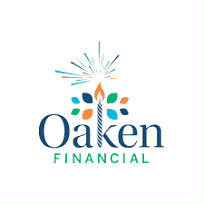
Yet another digital-focused institution, Oaken Financial offers both short-term and long-term, as well as registered and non-registered GICs. The interest rates for Oaken’s long-term registered GIC range from 5.4% for one year to 4.85% for five years. Non-registered GIC annual rates are the same as the registered GIC rates, with the only variation being in the semi-annual and monthly interest rates. The minimum investment for an Oaken Financial GIC is $1,000.
Oaken’s short-term GIC rates are 2.25% for 30 to 269-day periods and 2.70% for 270-364 Days.
Oaken Financial has something for everyone. Various offerings allow you to choose the GIC investment terms and rates that suit your financial situation.
Tangerine
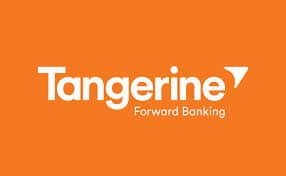
Tangerine is an online bank offering competitive GIC rates without minimum investment requirements. The one-year GIC rate is 4.9%, and the five-year rate is 3.75%. Tangerine also offers several short-term GICs, including 1.40% for 90 days and 5.10% for 270 days.
EQ Bank
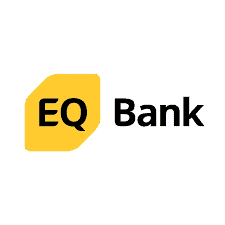
EQ Bank offers competitive GIC rates with a minimum deposit of $100. EQ offers registered, non-registered, short-term and long-term GICs. The rates for the long-term registered GIC include 5.10% for one year and 4.25% for five years. EQ’s longest GIC term is ten years, with an interest rate of 3.75%. The Tax-Free Savings Account GIC from EQ has similar rates as the standard long-term GIC, allowing you to save without incurring additional taxes for your earnings.
Short-term GIC offerings from EQ include 4.00% for three months, 4.75% for six months, and 5.00% for nine months.
Alterna Bank TFSA GIC
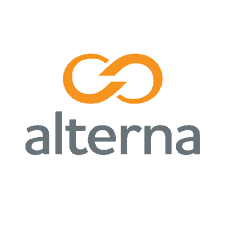
Alterna Bank offers Tax-Free Savings Account GICs, as well as redeemable and non-redeemable options. The interest rate for a one-year GIC with Alterna is 4.85% and 4.95% for two years.
Rather than offering standard rates for up to five-year terms, Alterna offers ratebuilder deposits, which vary your interest rate every year. For example, Alterna’s 5-year rate builder GIC rates per year are as follows:
- Year 1: 4.85%
- Year 2: 5.05%
- Year 3: 4.05%
- Year 4: 3.65%
- Year 5: 4.90%
Alterna Also offers short-term GICs, with 0.80% for 30-59 Days and 1.75% for 90-day terms. To see other short-term offerings from Alterna, check their website.
How To Buy A GIC
Once you’ve decided on the right GIC for your needs, the next step is to purchase it. Here’s a step-by-step guide on how to buy a GIC:
- Determine Your Investment Amount: Decide how much money you’re willing to invest in a GIC. Keep in mind the minimum investment requirements of different GICs.
- Choose the Right GIC: Consider the interest rate, term length, and other features of different GICs to choose one that aligns with your financial goals.
- Contact the Financial Institution: Reach out to the bank or financial institution offering the GIC. You can do this online, over the phone, or in person at a branch.
- Complete the Application Process: Provide the necessary information and documents to complete the application process. This may include your personal details, Social Insurance Number (SIN), and proof of identity.
- Fund Your GIC: Transfer the investment amount to your GIC. You can do this through a bank transfer, cheque, or other methods as provided by the financial institution.
- Wait for Confirmation: Once your application is processed and your GIC is funded, the financial institution will provide you with a confirmation document detailing the terms of your GIC.
Final Thoughts
Investing in GICs can be a safe and effective way to grow your wealth. GICs offer guaranteed returns, capital protection, and (often) insurance, making them a low-risk investment option.
Remember, the best GIC rates in Canada can change over time, so always do your research and compare the rates offered by different financial institutions. By doing so, you can ensure that you’re getting the most out of your investment. Happy investing!
Frequently Asked Questions
Q: What is a GIC?
A: A GIC, or Guaranteed Investment Certificate, is a low-risk investment offered by banks and other financial institutions. It offers a guaranteed return over a fixed period.
Q: How does a GIC work?
A: When you invest in a GIC, you’re essentially lending money to the bank for a specific time, known as the term. In return, the bank guarantees to pay you a certain amount of interest at the end of the term.
Q: Are GICs safe?
A: Yes, GICs are considered safe investments. Your principal investment is guaranteed to be paid back, and you also receive a guaranteed interest rate. Moreover, many GICs in Canada are covered by the Canada Deposit Insurance Corporation (CDIC) or provincial deposit insurance, providing additional protection for your investment.
Q: How are GIC rates calculated?
A: GIC rates are influenced by the bank’s prime rate, which is influenced by the Bank of Canada’s overnight rate. The interest rate of a GIC also depends on its features, such as the term length and whether it’s redeemable or non-redeemable.
